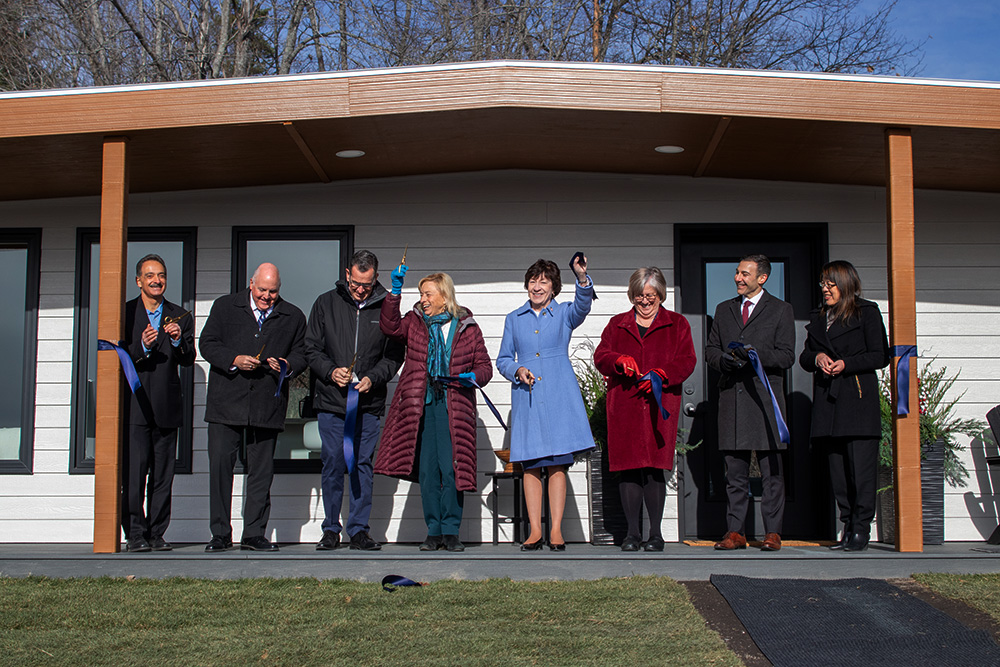The University of Maine is working toward exciting new advancements. On Monday, Nov. 21, the Advanced Structures and Composites Center (ASCC) unveiled its recently completed BioHome3D during a private event that welcomed many esteemed guests, including Maine State Senator Susan Collins and Governor Janet Mills. The 600-square-foot home is the world’s first-ever home to have its floors, walls and ceiling completely printed using biodegradable materials.
Dr. Habib Dagher, the founding executive director of the ASCC, continues to lead this project with funding from the U.S. Department of Energy and the Maine Housing Authority in pursuit of a shared goal to provide more affordable housing within the state and beyond.
Those who have dedicated their lives to serving the people of Maine, specifically Collins and Mills, have pledged their overwhelming support to this project since day one. There is an ever-present housing crisis in the state with an estimated 20,000 houses needed, especially for low-income families and communities. Collins, Mills and Senator Angus King aim to help allocate the required funding to meet the demand for housing.
This specific project has required the combined efforts of over 100 researchers and scientists between the ASCC and its project partner, Oak Ridge National Laboratory.
UMaine President Joan Ferrini-Mundy recognized in her speech the other notable work happening at the ASCC, all of which aims to further research and develop solutions to the significant problems facing the world today, specifically Maine.
Earlier this year, UMaine earned the classification as an R1 research facility, meaning it conducts research at the highest measurable level. According to the Carnegie Classification of Institutions of Higher Education, there are currently only 146 institutions out of thousands across the U.S. that have achieved this status.
The bulk of ASCC’s current research focuses on offshore wind power, solutions for transportation infrastructure, forest products and large-scale 3D printing. To date, about 2,700 students have had the privilege to work on certain aspects of these expansive projects.
Following Ferrini-Mundy’s remarks, Mills expressed her excitement at the university’s ongoing work toward developing accessible low-income housing.
“This pops us into the future. [This] pops us into an era of new, exciting innovation and production never before seen here in Maine, or in the country or across the world,” Mills said.
She also noted that Maine currently has the seventh highest in-migration rate in the country.
“The demand for affordable housing has never been higher,” Mills said.
The university next seeks to double the size of the ASCC and its capabilities and add another 3D printer to its lab. The current printer has been installed for about 3 years and with current modifications can print 500 pounds of material per hour. With two printers operating at this speed, Dagher says that UMaine would have the ability to print one of these houses in just two days. This would be a significant achievement for Dagher and his team, as over 8 million single-bedroom homes such as these are needed across the country.
The ASCC continues to exemplify the university’s drive for excellence through its impressive innovation in green energy and materials. Collins has represented Maine in Congress since 1997, and she has remained committed to helping Dagher achieve his vision since the ASCC’s earliest days.
“The amazing progress that led to this day is due to the work ethic, determination and spirit of innovation that defines our great state,” Collins said.
To learn more about the ASCC’s ongoing research and developments, visit https://composites.umaine.edu/.








